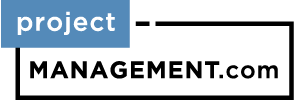There are many project management methodologies project managers can choose from to best run their efforts. The most common is the waterfall methodology, which sees one task or set of tasks being completed before kicking off the next. However, modern project management professionals have been adopting and implementing the agile methodology that was initially used for software development.
Agile is popular because of the success rate of its early and meticulously managed attention to detail, testing, and feedback. Let’s dive into what agile project management is, and how you can adopt it for your projects.
Table of Contents
- What Is Agile Project Management?
- How Agile Differs From Traditional Project Management
- Key Benefits of Agile
- How Does Agile Project Management Work?
- 7 Steps to Implementing Agile Project Management
- Being Agile
What Is Agile Project Management?
Agile project management utilizes an iterative approach that includes frequent and continuous releases, with feedback incorporated throughout. The focus is on early involvement of the stakeholders with constant improvement of the product and processes. This ensures the delivery of well-designed and thoroughly tested products that match a customer’s needs.

The agile methodology is based on a series of four core development values that are part of the Agile Manifesto.
| The 4 Values of Agile | |
|---|---|
| People | Individuals and interactions emphasized over processes and tools |
| Work | Focus on real, working features over comprehensive documentation |
| Communications | Work with clients and stakeholders through the whole project |
| Flexibility | Respond to change rather than following a determined plan |
There are also 12 guiding principles within the Agile manifesto. These can be boiled down into four distinct concepts: customer satisfaction, product quality, teamwork, and project management.
There are many methodologies within agile — including scrum, extreme programming, and lean — but they all adhere to the manifesto and principles.
How Agile Differs From Traditional Project Management
Typical project management is commonly described as the “waterfall” method. Pure waterfall project management requires the completion of each step before moving on to the next and involves the following phases:
- Requirements
- Design
- Development
- Integration
- Testing
- Deployment
This approach has risks, and over time, it can make projects take much longer than estimated to complete. This is commonly called scope creep and can waste a lot of time and money.
Agile project management is a very different approach to planning and executing projects. It uses an iterative approach, meaning you work in smaller segments, allowing for immediate inspection, tighter control, and quick adjustment.
It incorporates the same phases as waterfall (requirements, design, development, integration, testing and deployment), but instead of completing all of these steps for all product features at once, they are broken out in iterations called “sprints.” This methodology is flexible and allows for a more effective approach, providing constant and continuous improvement in quality.
Compare Agile vs. Waterfall: Differences in Software Development Methodologies
The Hybrid Model
Mixing traditional waterfall project management methods with iterative agile approaches may be the answer for your specific project. While agile has a better project success rate overall, you may see the need to create parts of a larger project the traditional way.
For example, one team could develop the interface designs and write the copy for a website using waterfall, tackling one task and then the next. At the same time, the development team can design, build, and test the site back end using the agile framework in sprints. It all comes together in the end with a fully functional website product that has a visual front end and navigation layered over a robust back end.
Key Benefits of Agile
Over time, agile projects have a high success rate and are superior to other project management methods. The risk of failure is relatively low, due to constant prioritizing and testing of product features.
Agile offers an attractive set of benefits that include:
- Continuous improvement using sprints supported by prior information and actual products
- Minimized scope creep by prioritizing feature development into small, frequent iterations
- Organized team structures that are customized to the project
- Excellent product quality thanks to testing that occurs throughout development
- High satisfaction for customers and product sponsors
- Increased team morale through an environment of support
- Improved collaboration and team ownership by working closely together
- Accurate metrics that are more relevant
- Improved visibility for team members and stakeholders
- Increased project control for easy corrections
- Improved predictability through the use of sprints and tools
- Low risk of failure due to constant prioritizing and testing
How Does Agile Project Management Work?
Agile is a very structured and detailed process that breaks projects down into smaller, more manageable chunks of effort and focus. As a result, teams are more transparent and can accommodate frequent inspection and adaptation. These smaller efforts are called sprints, and are generally scheduled in 2-week increments.
Agile is best applied to projects and industries that develop products that can be built and released in versions, and require continuous updates or improvements. Software, music, medical devices, pharmaceuticals, and even makeup formulations are all great candidates for the agile methodology.
Agile Teams and Roles
Agile teams are lean and usually consist of 9 to 15 people in various roles. The following roles make up the scrum team and framework:
- Development team: Those who create the product, including programmers, testers, designers, writers, and any other hands-on workers
- owner: Bridges the gap between the dev team, the customer, and business stakeholders
- Scrum master: Facilitates the project by supporting the dev team, clearing blockers, and following processes
The following roles are not part of the scrum framework, but are critically important and round out the agile project team:
- Stakeholders: Anyone with an interest in the project
- Agile mentor: The coach with experience implementing agile projects
Agile Tools
Depending on how your agile environment is set up, there are low-tech and high-tech communication and collaboration tools you can use.
Low-tech tools for local teams include:
- White boards
- Sticky notes in different colors
- Colorful pens or markers
- A sprint-specific kanban board
High-tech tools for hybrid and remote teams include:
- Video conferencing software
- Webcams
- Instant messaging apps
- Web-based desktop sharing apps
- Cloud-based collaboration websites and file organization systems
- Timeline tools with multiple views and dashboards
What Your Team Should Look for in the Best Agile Software & Tools for Project Management
7 Steps to Implementing Agile Project Management
If you are considering introducing agile project management to your organization, there are the key steps that can make this significant change a little easier to adopt across your teams.
- Create a roadmap.
- Begin with an implementation strategy to plan how your organization will transition. Document current processes and problems and outline what future processes will be. Create a step-by-step roadmap to move from existing processes to agile, including a timeframe.
- Establish a transformation team.
- Establish a transformation team and identify who is responsible for improving processes, reporting requirements, and measuring performance across the organization.
- Communicate the changes.
- Build awareness and excitement by communicating the changes and the benefits of the new process, using tools to educate everyone involved. The goal is to generate early support and eliminate fear and uncertainty.
- Test the process.
- Identify a pilot project to test the process and figure out how to work with agile methods. Iron out the wrinkles while the team slowly adjusts to the new methods.
- Get feedback.
- Make mistakes, gather feedback, and improve for next time. Use the end of a sprint to hold a sprint review and review product functionality, as well as setting expectations for the next sprint.
- Identify KPIs.
- Identify success metrics, as well as a quantifiable way to demonstrate success to stakeholders.
- Appoint a mentor.
- Train and learn together. Identify a mentor to lead the way and make sure other team members learn the same lessons.
Being Agile
Putting agile into action for your organization requires creating an environment where the team can work closely, whether they are all on-site or spread out in a remote setting. The workspace needs to facilitate communication and support the process.
Remember: The development team members are central to the success of this environment. Ideally, it would be best to have the scrum team all together in one location, but that is frequently not the case in modern organizations. Make the best effort to centralize and create a sense of connectedness across the whole team.












